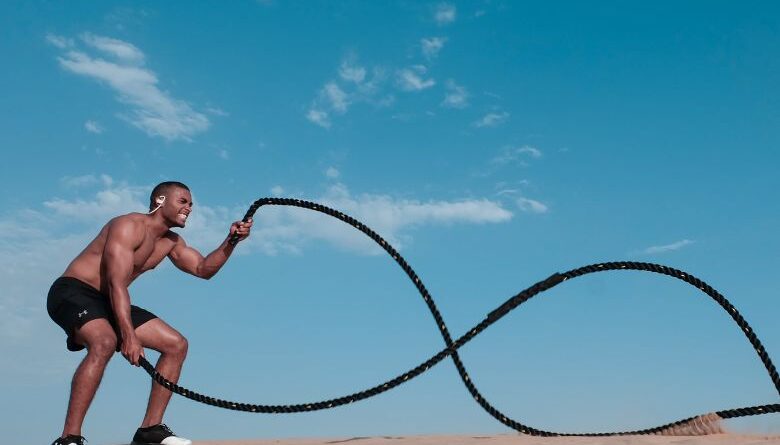Strengthening Core Muscles for Stability and Posture
Strengthening Core Muscles for Stability and Posture
In our fast-paced lives, we often neglect the importance of having a strong core. Core muscles play a crucial role in providing stability and maintaining proper posture. Whether you’re an athlete looking to enhance your performance or someone seeking better balance and everyday comfort, strengthening your core can bring significant benefits. In this article, we’ll explore the fundamentals of core muscles, the significance of core strength, and various exercises to help you achieve a stable core.
Understanding Core Muscles
The core is more than just the visible abdominal muscles; it includes the muscles in your lower back, hips, and pelvis. Major core muscles include the rectus abdominis, transverse abdominis, obliques, erector spinae, and multifidus. These muscles work in harmony to support your spine, pelvis, and organs, providing stability for everyday movements and more strenuous activities.
The Importance of Core Strength
Having a strong core is not just about aesthetics; it’s about overall functional fitness. A stable core helps you maintain proper body alignment, reducing the risk of injuries during physical activities. It also improves posture, preventing back pain and discomfort. Additionally, core strength enhances athletic performance and helps you execute movements with precision and power.
Exercises for Core Strengthening
4.1 Crunches
Crunches target the rectus abdominis and are excellent for building overall core strength. Lie on your back, bend your knees, and place your hands behind your head. Lift your upper body towards your knees, engaging your core muscles, and then slowly lower back down.
4.2 Planks
Planks are a highly effective isometric exercise that engages multiple core muscles. Get into a push-up position but rest on your forearms. Maintain a straight line from head to heels, engaging your core, and hold the position for as long as possible.
4.3 Russian Twists
Russian twists work the obliques. Sit on the ground with your knees bent and feet flat. Lean back slightly, keeping your back straight, and twist your torso from side to side, touching the floor on each side.
4.4 Leg Raises
Leg raises target the lower abdominal muscles. Lie on your back, place your hands under your hips for support, and lift your legs towards the ceiling. Slowly lower them back down without touching the ground.
4.5 Bicycle Crunches
Bicycle crunches engage the entire core. Lie on your back, bring your knees towards your chest, and alternate touching your elbow to the opposite knee as you extend your other leg.
4.6 Dead Bug Exercise
The dead bug exercise activates the transverse abdominis. Lie on your back with your arms extended towards the ceiling and your legs lifted. Lower one arm and the opposite leg towards the floor without arching your back, then return to the starting position and switch sides.
4.7 Bird-Dog Exercise
The bird-dog exercise works on core stability and balance. Begin on all fours, then extend one arm and the opposite leg simultaneously while keeping your body stable. Return to the starting position and switch sides.
4.8 Superman Pose
The Superman pose targets the lower back. Lie face down, extend your arms and legs off the ground, and lift them as high as possible while squeezing your glutes and lower back muscles.
4.9 Bridges
Bridges activate the glutes and lower back. Lie on your back with your knees bent and feet flat on the ground. Lift your hips towards the ceiling, engage your core, and hold the position for a few seconds before lowering back down.
4.10 Mountain Climbers
Mountain climbers are a dynamic exercise that engages the entire core and provides a cardio element. Get into a plank position and bring one knee towards your chest, then quickly switch legs as if you’re climbing a mountain.
4.11 Medicine Ball Slam
Medicine ball slams work on power and core strength. Hold a medicine ball overhead, engage your core, and slam the ball into the ground as hard as you can, then catch it on the rebound.
4.12 Kettlebell Swings
Kettlebell swings activate the entire core while also working on hip mobility and explosiveness. Stand with your feet shoulder-width apart, hold the kettlebell with both hands and swing it between your legs before thrusting your hips forward to swing the kettlebell to shoulder height.
4.13 Pallof Press
The pall of the press is a great exercise for anti-rotation core strength. Attach a resistance band to a stable anchor, hold the other end with both hands close to your chest, and push the band straight out, resisting the rotational force.
4.14 Hollow Body Hold
The hollow body hold engages the entire core. Lie on your back, lift your head and feet off the ground, and keep your arms extended towards your feet. Hold this position for as long as possible.
Incorporating Cardiovascular Exercises
While core exercises are vital, don’t forget to include cardiovascular exercises in your routine. Activities like running, swimming, or cycling help burn calories and reduce body fat, which contributes to better core definition and overall fitness.
The Role of Nutrition in Core Strength
A healthy diet plays a significant role in achieving a strong core. Ensure you’re consuming a balanced mix of macronutrients, including protein for muscle repair and growth, and vitamins and minerals for overall well-being.
Common Mistakes to Avoid
When working on core strength, avoid relying solely on crunches and neglecting other core muscles. Overtraining or improper form can also lead to injuries, so listen to your body and progress gradually.
Benefits Beyond Stability and Posture
Aside from stability and posture, a strong core enhances your performance in various physical activities, such as lifting weights, playing sports, or even just carrying groceries.
Tips for a Consistent Core Workout Routine
To maintain a consistent core workout routine, find exercises you enjoy and incorporate them into your fitness regimen. Mix up your exercises to keep things interesting and challenging.
Listening to Your Body
Each individual’s fitness level and goals are different, so pay attention to what works best for you. If you experience pain or discomfort during any exercise, consult a fitness professional.
Conclusion
Strengthening your core muscles is vital for overall health and fitness. A strong core provides stability, improves posture, and enhances performance in various physical activities. By incorporating a variety of core exercises and maintaining a balanced diet, you can achieve a stable core and reap the benefits in your daily life.
FAQs
- How often should I perform core exercises? It’s best to perform core exercises 2-3 times a week, allowing a day of rest between sessions.
- Can I do core exercises every day? While some light core exercises can be done daily, intense core workouts should have rest days to allow muscles to recover.
- Are there any alternatives to traditional crunches? Yes, there are many alternatives, such as planks, bicycle crunches, and leg raises, that effectively target your core.
- Will core exercises help me get a six-pack? Core exercises will help strengthen your abdominal muscles, but visible abs also require low body fat, which depends on nutrition and overall exercise.
- Can I do core exercises if I have back pain? If you have back pain, consult a healthcare professional before starting any exercise routine, as some exercises may exacerbate the condition.
- The Healing Power of Aromatherapy: Essential Oils for Wellness





Pingback: Mindful Tech Usage: Establishing Healthy Digital Habits | UTHSI 2023